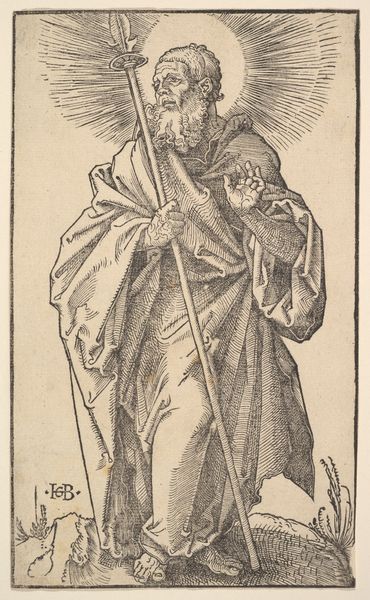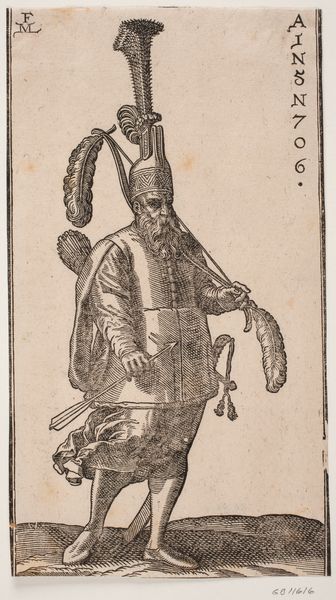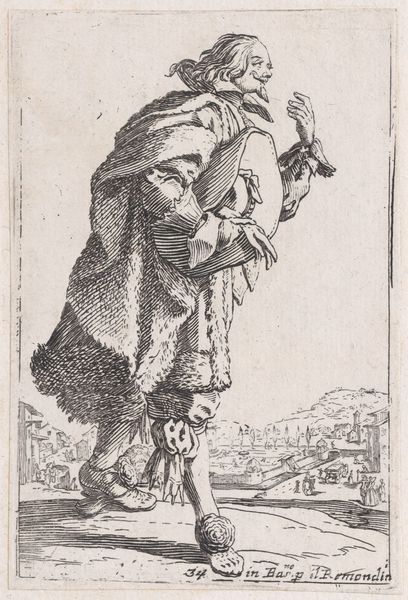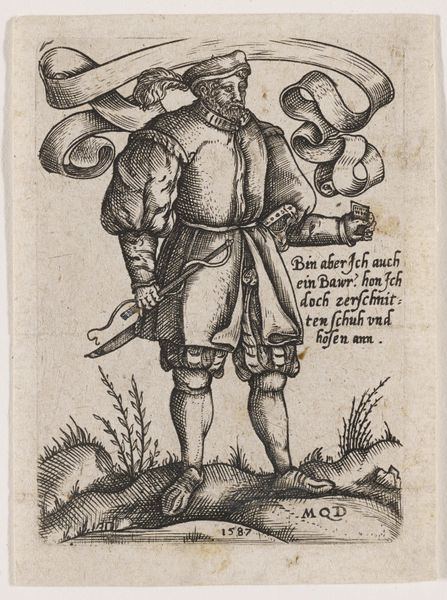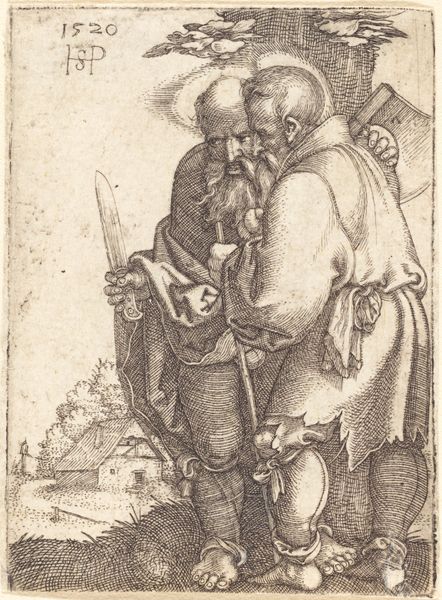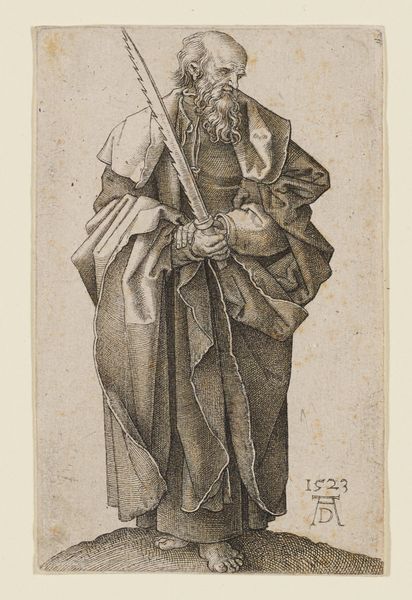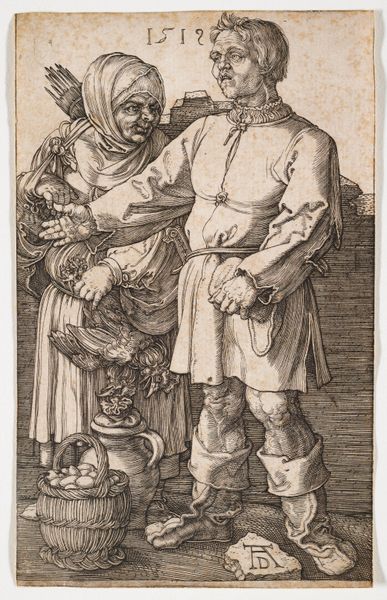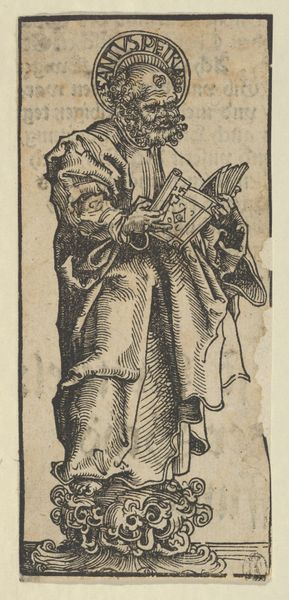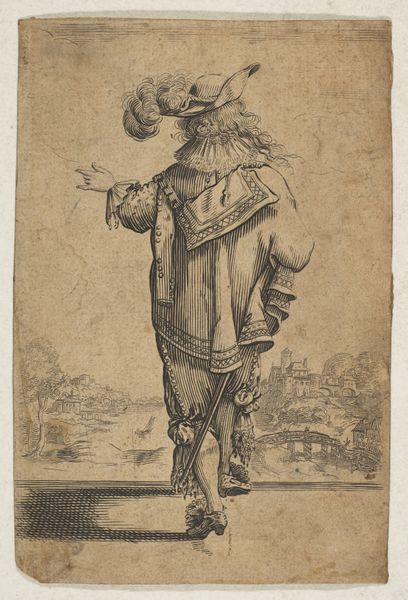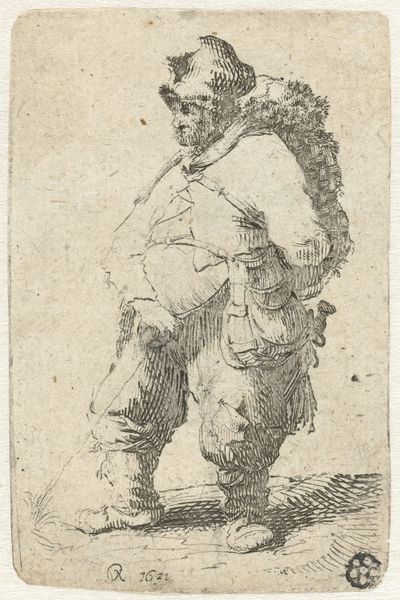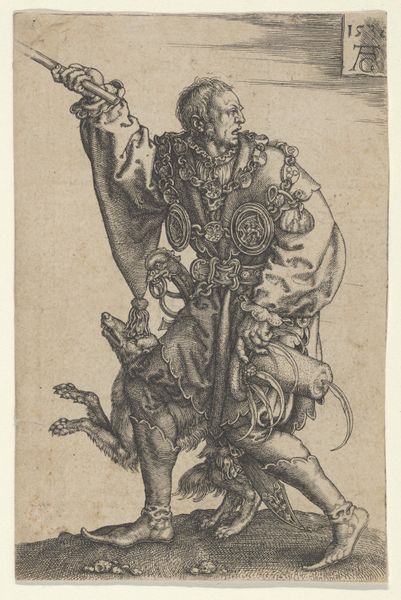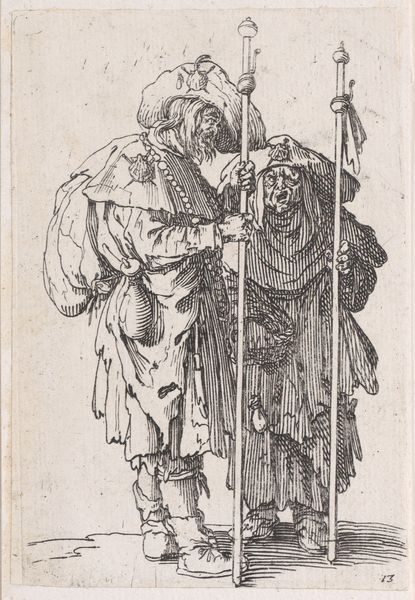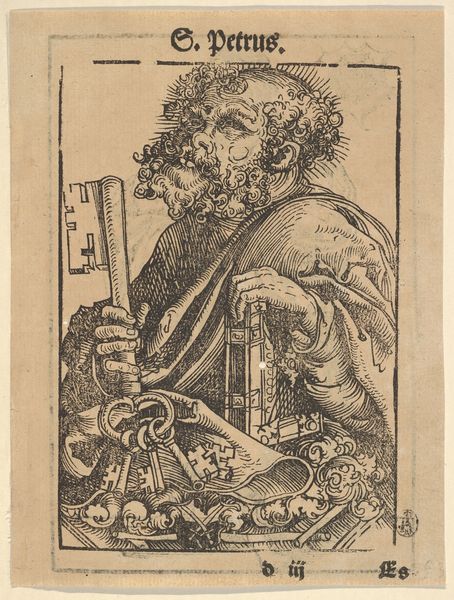
drawing, print, woodcut, engraving
#
portrait
#
drawing
# print
#
woodcut
#
northern-renaissance
#
engraving
Dimensions: plate: 4 9/16 x 2 15/16 in. (11.6 x 7.5 cm) sheet: 4 13/16 x 3 1/8 in. (12.2 x 8 cm)
Copyright: Public Domain
Curator: We are looking at Albrecht Dürer's "The Bagpiper," created in 1514, a small but striking engraving currently held at The Metropolitan Museum of Art. What strikes you when you first look at it? Editor: It's the figure's leaning posture—almost as if the bagpiper is weary, finding support against the tree. There's a sense of melancholy. The intricate details given to the instrument and the man’s attire seem to highlight a kind of working-class troubadour—his clothes, though detailed, still have that air of wear. Curator: It's interesting that you see weariness. During the Renaissance, bagpipers were associated with festive occasions but also sometimes with lower social classes and even the grotesque. This print coincides with a rise of an art market catering to the rising middle classes. Editor: Yes, the commercial context shifts our reading of this from simply festive. I’m wondering about how the image might have played with those social perceptions. The detailed depiction, executed in this medium available to a wider buying group, elevate a marginalized figure? Dürer situates him with dignity. It's not a caricature. Curator: Absolutely. Dürer was acutely aware of his audience, carefully managing his image as a professional artist and shrewd businessman in an increasingly competitive print market. The precise lines, the shading... the woodcut allows him to produce and distribute the images on a mass scale. He could elevate printmaking as a respectable art form, proving his skill, which previously may have been limited to manuscript decorations or illustrations. Editor: He makes a commoner into a commodity and celebrates a medium associated with that social class. Dürer uses his technique and reputation to validate those previously devalued elements. We should also consider how the Protestant Reformation impacted image-making and printmaking; Dürer's art, in many ways, served as a vessel to the shifts of those social dynamics. Curator: Precisely, the politics of imagery becomes even more crucial. This image, viewed within the framework of the changing society of the Reformation, might not have been made if not for the historical situation of Dürer’s time. His prints offer a visual catalogue that shaped societal perception during a transformational era. Editor: Considering its time and Dürer's sharp technical skill, seeing "The Bagpiper" through the lens of social transformation makes me appreciate the radical elements embedded within this intimate print. Curator: And understanding Dürer's ambitions and cultural context encourages me to question which audiences are served when artworks like "The Bagpiper" enter public museum collections.
Comments
No comments
Be the first to comment and join the conversation on the ultimate creative platform.

